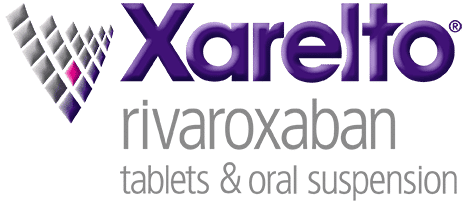预约演示
更新于:2025-05-07
GPRC5D
更新于:2025-05-07
基本信息
别名 G protein-coupled receptor class C group 5 member D、G protein-coupled receptor, class C, group 5, member D、G protein-coupled receptor, family C, group 5, member D + [2] |
简介 G-protein coupled receptor involved in hard keratin expression and likely plays a role in the development of hair and nails. |
关联
77
项与 GPRC5D 相关的药物作用机制 CD3刺激剂 [+3] |
非在研适应症- |
最高研发阶段批准上市 |
首次获批国家/地区 美国 |
首次获批日期2023-08-09 |
靶点 |
作用机制 GPRC5D抑制剂 |
非在研适应症- |
最高研发阶段临床3期 |
首次获批国家/地区- |
首次获批日期1800-01-20 |
作用机制 BCMA调节剂 [+3] |
在研机构 |
原研机构 |
非在研适应症- |
最高研发阶段临床2期 |
首次获批国家/地区- |
首次获批日期1800-01-20 |
87
项与 GPRC5D 相关的临床试验NCT06461988
An Open-Label, Non-Randomized, Phase II Study to Study the Efficacy of Talquetamab (JNJ-64407564) and Lenalidomide as Post Stem Cell Transplant Maintenance in Multiple Myeloma (OPTIMMAL)
Multiple myeloma (MM) is a heterogenous plasma cell malignancy characterized by clonal proliferation of plasma cells and organ damage. Autologous transplantation with high dose chemotherapy is the standard of care in frontline treatment of eligible patients with MM.
开始日期2025-11-01 |
申办/合作机构  Stanford University Stanford University [+1] |
NCT06572605
A Phase 1b/2 Study of Talquetamab Plus Concomitant Priming Radiotherapy in Multiple Myeloma With Extramedullary Disease
This phase I/II trial tests the safety and effectiveness of extramedullary disease (EMD)-directed external beam radiation therapy (EBRT) in combination with talquetamab for the treatment of multiple myeloma patients with extramedullary disease. Extramedullary disease in multiple myeloma involves the infiltration of organs and soft tissues by malignant plasma cells and has proven difficult to treat. Radiation therapy uses high energy x-rays, particles, or radioactive seeds to kill cancer cells and shrink cancers. EBRT is a type of radiation therapy that delivers high-energy beams to the cancer from outside of the body. In this trial, the EBRT will be directed to a site of extramedullary disease. Talquetamab is a monoclonal antibody that may interfere with the ability of cancer cells to grow and spread. A monoclonal antibody is a type of protein that can bind to certain targets in the body, such as molecules that cause the body to make an immune response (antigens). Combining EMD-directed EBRT with talquetamab may be safe, tolerable, and/or effective in treating multiple myeloma patients with extramedullary disease.
开始日期2025-07-01 |
申办/合作机构 |
NCT06827860
A Phase 2 Single-Arm Study of Subcutaneous Talquetamab in Elderly Patients With Multiple Myeloma in Early Relapse
Induction therapy approaches in recent years have evolved, now utilizing triple or quadruple drug regimens in the majority of patients. By combining anti-CD38 antibodies, proteasome inhibitors (PIs), immunomodulatory drugs (IMiDs), and steroids, patients achieve longer remissions with their first- and second-line therapies but also become refractory to most or all three major drug classes earlier. For patients who are refractory to at least 3 of the commonly administered PIs and IMiDs, occurring after 2 lines of therapy in many, the median overall survival is only 5 months. Elderly, frail patients are not often candidates at this point for aggressive therapies like stem cell transplantation and CAR T-cell therapy thus necessitating effective yet tolerable treatments for elderly patients in early relapse (1-3 prior therapy). Talquetamab is a GPRC5DxCD3 bispecific antibody that redirects patients' T cells to myeloma cells which express GPRC5D. In the phase 1 MonumenTAL-1, heavily pretreated patients with a median of 6 prior lines of therapy attained a 70% response rate with 405 μg/kg of subcutaneous (SC) talquetamab. Importantly, subcutaneous talquetamab was found to be tolerable for the treated population, which included 28% of patients aged ≥70, with only three patients experiencing dose-limiting toxicities in the form of grade 3 rashes which responded to steroids. The anti-CD38 antibody daratumumab eliminates CD38-positive T and B regulatory cells, potentiates the activity of bispecific antibodies like talquetamab, and may improve its efficacy when used in combination. The aim of this study will be to assess the efficacy and safety of treating elderly patients with relapsed/refractory multiple myeloma with at least ≥2 prior lines of therapy with subcutaneous talquetamab. Patients who have progressive disease on talquetamab or who fail to respond after 3 cycles will have subcutaneous daratumumab added to their regimen.
开始日期2025-06-01 |
申办/合作机构 |
100 项与 GPRC5D 相关的临床结果
登录后查看更多信息
100 项与 GPRC5D 相关的转化医学
登录后查看更多信息
0 项与 GPRC5D 相关的专利(医药)
登录后查看更多信息
166
项与 GPRC5D 相关的文献(医药)2025-12-31·mAbs
T cell margination: investigating the detour of T cells following forimtamig treatment in humanized mice
Article
作者: O’Brien, Nils ; Lechner, Stefanie ; Eckmann, Jan ; Osl, Franz ; Klein, Christian ; Pöschinger, Thomas ; Attig, Jan ; Wolf, Ann-Katrin ; Mueller, Joerg P.J. ; Bröske, Ann-Marie E. ; Colombetti, Sara ; Rae, Richard ; Beilhack, Andreas ; Umaña, Pablo ; Crisand, Cylia
2025-08-01·Anti-Cancer Agents in Medicinal Chemistry
A Systematic Review and Meta-analysis on the Safety and Efficacy of CAR T Cell
Therapy Targeting GPRC5D in Patients with Multiple Myeloma: A New Insight in
Cancer Immunotherapy
Article
作者: Jadidi-Niaragh, Farhad ; Dashti, Mohsen ; Mahalleh, Mehrdad ; Alinejad, Erfan ; Ahmadpour, Mahsa ; Lorestani, Parsa ; Habibi, Mohammad Amin ; Robat-Jazi, Behrouz ; Nejati, Negar ; Mohammadi, Shiva ; Hamidieh, Amir Ali
2025-05-01·Clinical Lymphoma Myeloma and Leukemia
Comprehensive Review of Bispecific Antibody Constructs In Multiple Myeloma: Affinities, Dosing Strategies and Future Perspectives
Review
作者: Einsele, Hermann ; Rasche, Leo ; Waldschmidt, Johannes M ; Kortüm, K Martin
2,080
项与 GPRC5D 相关的新闻(医药)2025-05-02
·医药笔记
▎Armstrong2025年5月1日,礼来发布一季度财报,营业收入127亿美元,同比增长45%,核心产品销售额75亿美元,同比增长119%。礼来2025年580-610亿美元的收入指引不变,强调小分子GLP-1的成功具有重要意义。不过诺和诺德在减重药物市场上积极应对,允许多家远程医疗服务商大幅降价。同时,市场对于特朗普政府可能实施的药品关税影响业绩也存在担忧。礼来在公布亮眼的一季报数据后,股价却大跌12%,目前市值为7500亿美元。美国市场上,礼来GLP-1市场份额已经超过诺和诺德,并保持增长趋势。替尔泊肽降糖版一季度销售额38.42亿美元,同比增长113%。替尔泊肽减重版一季度销售额23.12亿美元,为去年一季度的4倍多,替尔泊肽两者合计61.54亿美元。信达生物信迪利单抗一季度销售额1.375亿美元,合10亿元人民币,同比增长19%。总结礼来核心产品销售额一路高涨,尤其是替尔泊肽在降糖市场快速替代司美格鲁肽,减重市场快速放量,预计今年将达到300亿美元销售额,占总营收的一半左右。Armstrong技术全梳理系列GPRC5D靶点全梳理;CD40靶点全梳理;CD47靶点全梳理;补体靶向药物技术全梳理;补体药物:眼科治疗的重要方向;Claudin 6靶点全梳理;Claudin 18.2靶点全梳理;靶点冷暖,行业自知;中国大分子新药研发格局;被炮轰的“me too”;佐剂百年史;胰岛素百年传奇;CUSBEA:风雨四十载;中国新药研发的焦虑;中国生物医药企业的研发竞争;中国双抗竞争格局;中国ADC竞争格局;中国双抗技术全梳理;中国ADC技术全梳理;Ambrx技术全梳理;Vir Biotech技术全梳理;Immune-Onc技术全梳理;亘喜生物技术全梳理;康哲药业技术全梳理;科济药业技术全梳理;恺佧生物技术全梳理;同宜医药技术全梳理;百奥赛图技术全梳理;腾盛博药技术全梳理;创胜集团技术全梳理;永泰生物技术全梳理;中国抗体技术全梳理;德琪医药技术全梳理;德琪医药技术全梳理2.0;和铂医药技术全梳理;荣昌生物技术全梳理;再鼎医药技术全梳理;药明生物技术全梳理;恒瑞医药技术全梳理;豪森药业技术全梳理;正大天晴技术全梳理;吉凯基因技术全梳理;基石药业技术全梳理;百济神州技术全梳理;百济神州技术全梳理第2版;信达生物技术全梳理;信达生物技术全梳理第2版;中山康方技术全梳理;复宏汉霖技术全梳理;先声药业技术全梳理;君实生物技术全梳理;嘉和生物技术全梳理;志道生物技术全梳理;道尔生物技术全梳理;尚健生物技术全梳理;康宁杰瑞技术全梳理;科望医药技术全梳理;岸迈生物技术全梳理;礼进生物技术全梳理;康桥资本技术全梳理;余国良的抗体药布局;荃信生物技术全梳理;安源医药技术全梳理;三生国健技术全梳理;仁会生物技术全梳理;乐普生物技术全梳理;同润生物技术全梳理;宜明昂科技术全梳理;派格生物技术全梳理;迈威生物技术全梳理;Momenta技术全梳理;NGM技术全梳理;普米斯生物技术全梳理;普米斯生物技术全梳理2.0;三叶草生物技术全梳理;贝达药业抗体药全梳理;泽璟制药抗体药全梳理;恒瑞医药抗体药全梳理;齐鲁制药抗体药全梳理;石药集团抗体药全梳理;豪森药业抗体药全梳理;华海药业抗体药全梳理;科伦药业抗体药全梳理;百奥泰技术全梳理;凡恩世技术全梳理。
财报抗体药物偶联物医药出海
2025-05-01
·医药笔记
▎Armstrong2025年5月1日,Madrigal Pharmaceuticals发布一季度财报,MASH新药Rezdiffra销售额1.373亿美元。Rezdiffra从去年上市以来,季度销售额一路高涨,上市满一年实现3.174亿美元销售额。使用Rezdiffra的患者人数不断攀升,2025年一季度超过17000例,相比于31.5万例适用人群仅有5%的渗透率,意味着仍有很大的上涨空间。Rezdiffra对于处方医生的渗透率一路高升,体现了临床上巨大的未满足临床需求。Rezdiffra目前获批的是F2-F3阶段的MASH,对于F4阶段的临床试验正在进行中。目前的数据显示,Rezdiffra对于F4阶段的MASH同样有治疗潜力。总结昨天,司美格鲁肽治疗MASH的三期临床数据发表在新英格兰医学期刊上。FGF21在F4阶段也获得突破性的疗效数据,THR-β激动剂、GLP-1受体激动剂、FGF21的临床进展,未来将为广大MASH患者带来更多治疗选择。Armstrong技术全梳理系列GPRC5D靶点全梳理;CD40靶点全梳理;CD47靶点全梳理;补体靶向药物技术全梳理;补体药物:眼科治疗的重要方向;Claudin 6靶点全梳理;Claudin 18.2靶点全梳理;靶点冷暖,行业自知;中国大分子新药研发格局;被炮轰的“me too”;佐剂百年史;胰岛素百年传奇;CUSBEA:风雨四十载;中国新药研发的焦虑;中国生物医药企业的研发竞争;中国双抗竞争格局;中国ADC竞争格局;中国双抗技术全梳理;中国ADC技术全梳理;Ambrx技术全梳理;Vir Biotech技术全梳理;Immune-Onc技术全梳理;亘喜生物技术全梳理;康哲药业技术全梳理;科济药业技术全梳理;恺佧生物技术全梳理;同宜医药技术全梳理;百奥赛图技术全梳理;腾盛博药技术全梳理;创胜集团技术全梳理;永泰生物技术全梳理;中国抗体技术全梳理;德琪医药技术全梳理;德琪医药技术全梳理2.0;和铂医药技术全梳理;荣昌生物技术全梳理;再鼎医药技术全梳理;药明生物技术全梳理;恒瑞医药技术全梳理;豪森药业技术全梳理;正大天晴技术全梳理;吉凯基因技术全梳理;基石药业技术全梳理;百济神州技术全梳理;百济神州技术全梳理第2版;信达生物技术全梳理;信达生物技术全梳理第2版;中山康方技术全梳理;复宏汉霖技术全梳理;先声药业技术全梳理;君实生物技术全梳理;嘉和生物技术全梳理;志道生物技术全梳理;道尔生物技术全梳理;尚健生物技术全梳理;康宁杰瑞技术全梳理;科望医药技术全梳理;岸迈生物技术全梳理;礼进生物技术全梳理;康桥资本技术全梳理;余国良的抗体药布局;荃信生物技术全梳理;安源医药技术全梳理;三生国健技术全梳理;仁会生物技术全梳理;乐普生物技术全梳理;同润生物技术全梳理;宜明昂科技术全梳理;派格生物技术全梳理;迈威生物技术全梳理;Momenta技术全梳理;NGM技术全梳理;普米斯生物技术全梳理;普米斯生物技术全梳理2.0;三叶草生物技术全梳理;贝达药业抗体药全梳理;泽璟制药抗体药全梳理;恒瑞医药抗体药全梳理;齐鲁制药抗体药全梳理;石药集团抗体药全梳理;豪森药业抗体药全梳理;华海药业抗体药全梳理;科伦药业抗体药全梳理;百奥泰技术全梳理;凡恩世技术全梳理。
财报临床3期抗体药物偶联物
2025-04-30
·宜联生物
▎Armstrong2025年4月30日,宜联生物全球首创VEGF ADC新药YL242的临床试验申请获得NMPA受理。根据AACR年会上的公开信息,YL242采用宜联生物TMALIN技术平台构建,靶向游离VEGF,采用蛋白酶裂解三肽linker,毒素采用拓扑异构酶I抑制剂C24。YL242在血液中高度稳定,在肿瘤微环境中被特异性酶切割释放毒素,作用机制上同时结合了Payload的细胞毒性和VEGF抗体的血管抑制效应。TMALIN®利用肿瘤微环境和溶酶体在胞外胞内实现双重裂解机制,具有高水溶性、高均一性、高体内外稳定性以及肿瘤组织富集特性。总结宜联生物围绕TMALIN技术平台已经建立起丰富且具差异化特色的研发管线,多款ADC完成授权合作,自主推进的B7H3 ADC已经处于三期临床阶段,NaPi2b ADC处于一期临床阶段,CDH17 ADC、VEGF ADC已经申报临床试验。Armstrong技术全梳理系列GPRC5D靶点全梳理;CD40靶点全梳理;CD47靶点全梳理;补体靶向药物技术全梳理;补体药物:眼科治疗的重要方向;Claudin 6靶点全梳理;Claudin 18.2靶点全梳理;靶点冷暖,行业自知;中国大分子新药研发格局;被炮轰的“me too”;佐剂百年史;胰岛素百年传奇;CUSBEA:风雨四十载;中国新药研发的焦虑;中国生物医药企业的研发竞争;中国双抗竞争格局;中国ADC竞争格局;中国双抗技术全梳理;中国ADC技术全梳理;Ambrx技术全梳理;Vir Biotech技术全梳理;Immune-Onc技术全梳理;亘喜生物技术全梳理;康哲药业技术全梳理;科济药业技术全梳理;恺佧生物技术全梳理;同宜医药技术全梳理;百奥赛图技术全梳理;腾盛博药技术全梳理;创胜集团技术全梳理;永泰生物技术全梳理;中国抗体技术全梳理;德琪医药技术全梳理;德琪医药技术全梳理2.0;和铂医药技术全梳理;荣昌生物技术全梳理;再鼎医药技术全梳理;药明生物技术全梳理;恒瑞医药技术全梳理;豪森药业技术全梳理;正大天晴技术全梳理;吉凯基因技术全梳理;基石药业技术全梳理;百济神州技术全梳理;百济神州技术全梳理第2版;信达生物技术全梳理;信达生物技术全梳理第2版;中山康方技术全梳理;复宏汉霖技术全梳理;先声药业技术全梳理;君实生物技术全梳理;嘉和生物技术全梳理;志道生物技术全梳理;道尔生物技术全梳理;尚健生物技术全梳理;康宁杰瑞技术全梳理;科望医药技术全梳理;岸迈生物技术全梳理;礼进生物技术全梳理;康桥资本技术全梳理;余国良的抗体药布局;荃信生物技术全梳理;安源医药技术全梳理;三生国健技术全梳理;仁会生物技术全梳理;乐普生物技术全梳理;同润生物技术全梳理;宜明昂科技术全梳理;派格生物技术全梳理;迈威生物技术全梳理;Momenta技术全梳理;NGM技术全梳理;普米斯生物技术全梳理;普米斯生物技术全梳理2.0;三叶草生物技术全梳理;贝达药业抗体药全梳理;泽璟制药抗体药全梳理;恒瑞医药抗体药全梳理;齐鲁制药抗体药全梳理;石药集团抗体药全梳理;豪森药业抗体药全梳理;华海药业抗体药全梳理;科伦药业抗体药全梳理;百奥泰技术全梳理;凡恩世技术全梳理。
抗体药物偶联物AACR会议临床3期临床2期
分析
对领域进行一次全面的分析。
登录
或

生物医药百科问答
全新生物医药AI Agent 覆盖科研全链路,让突破性发现快人一步
立即开始免费试用!
智慧芽新药情报库是智慧芽专为生命科学人士构建的基于AI的创新药情报平台,助您全方位提升您的研发与决策效率。
立即开始数据试用!
智慧芽新药库数据也通过智慧芽数据服务平台,以API或者数据包形式对外开放,助您更加充分利用智慧芽新药情报信息。
生物序列数据库
生物药研发创新
免费使用
化学结构数据库
小分子化药研发创新
免费使用




